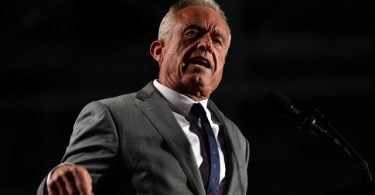The new person in charge of Guam Tourism is In the US Territory Guam former Governor Carl Guitierrez. Guitierrez was appointed as the interim president and CEO of the Guam Visitors Bureau after former CEO Pilar Laguaña retired from her 40 years in serving the Guam Travel and Tourism Industry.
Guam is in the same situation as most travel and tourism destinations in the United States. Empty hotels and flights, deserted beaches, and closed restaurants. Coronavirus took over the U.S. Territory located just a little more than an hour flight from Manila
Every Crisis is an opportunity. Federally-backed stimulus capita may be used to reinvest in a new future of Guam Tourism.
In an interview with a local publication (PNC), Guitierrez said: The opportunity for Guam is to reimagine the visitor industry and chart a path to a more sustainable recovery.
The former governor wants to make Guam a more unique, culturally relevant, Chamoru-centric, and eco-friendly premium destination that would be more accessible than ever.
Visitors should feel safe, secure and health assured from their points of embarkation all the way through their return flights.
Such an approach will require a mutual recognition among industry players that we’re all in this together and that we require an unprecedented level of cooperation. And this is exactly what my team and I plan to accomplish, with Governor Lou Leon Guerrero and Lt. Governor Josh Tenorio’s blessings, advice, and consent. We also hope to earn the respect, support, and valuable input of Speaker Tina Muna Barnes and the 35th Legislature,” the former governor added.
As first reported in PNC Guam the former governor has a lot of experience dealing with adversity.
As a newly elected governor in 1995, Gutierrez inherited a severe cash deficit in which there seemed to be no way to meet payroll.
But Gutierrez cash-managed GovGuam out of that crisis and his administration was soon able to bounce back to the prosperity of the mid-80s and early ‘90s.
Right away, Gutierrez convened business leaders, even his political opponents, and asked them to help in restoring the vitality of Guam’s economy.
Gutierrez was also a child of war, having been born in 1941, less than two months before the bombing of Pearl Harbor and Guam.
By 1997, the Gutierrez administration had broken all-time tourism records with more than 1.4 million arrivals. And by 1998, Gutierrez had reimagined, rebranded, and reopened the heart of Tumon now known as “Pleasure Island.” This helped Guam bounce back from the Korean Air crash of the previous year and build and sustain new momentum.
“But that was more than two decades ago and right now we’re due for a new concept that meets the needs and expectations of a pandemic and post-pandemic world,” Gutierrez told PNC.
As such, Gutierrez said Guam needs to open Guam’s visitor industry as safely and quickly as possible.
In addition, new travel protocols should incorporate testing within 72 hours prior to entering and departing Guam, as well as the presentation of government-approved COVID-19-negative certificates before entering any international airport.
This will require the negotiation of reciprocal documentation protocols with neighboring countries and then, expansion to other nations from that starting point.
The Iceland model
Taking a cue from Iceland, Gutierrez is also considering the viability of eliminating the mandatory 14-day quarantine period for visitors who take and pass a free COVID-19 test upon arrival at the airport. But anyone testing positive would still have to be isolated for 14 days.
Iceland has also successfully implemented a COVID-19 tracing app that more than a third of its 364,000-plus population is already using.
“The government there is considering making it mandatory for visitors to use this application—so that’s something we’re also looking at as a possibility for Guam,” Gutierrez said.
Travel safety bubbles
As the travel hub of the Western Pacific, Gutierrez said Guam must quickly cement a reputation as a low-risk destination while partnering with Saipan, Tinian, Rota, Palau, and the various destinations of Micronesia.
He said regional packages that promote travel safety bubbles will help visitors feel secure as they transit from one virus-free part of an island to another and even along the various routes of inter-island and inter-destination travel.
“This is what Asian travelers, in particular, will expect as they get back to outbound traveling. The isolated islands of the Western Pacific have enjoyed relatively low incidence of infection and some have reportedly harbored zero infection. COVID-free Palau, which has reportedly enjoyed the extra protection of Taiwanese coronavirus testing and prevention, is already looking at the prospect of creating a trustworthy travel bubble with Taiwan,” Gutierrez said.
“Barring the entry of travelers from highly infected parts of a country, tracing visitors’ recent travel, temperature-taking, sanitizing, and carving out visitor “safe zones” will all contribute to a feeling of security so people feel the promise of self-assurance in the environments they visit and lodge in,” the former governor added.
Gutierrez also pointed out that destinations that are the quickest to adjust to shifting market demand by making travelers feel safe and welcome while experiencing authentic hospitality will enjoy the earliest rewards. And those that remain flexibly responsive with short-term, midterm, and long-term planning and execution will become destination-marketing trendsetters.
Open-air restaurants
To help local restaurants crack the social distancing conundrum of spacing out customers while losing revenue on empty tables, Gutierrez said Guam can take a cue from Berkeley, California and Vilnius, Lithuania — places that plan to designate wide-open dining areas for patrons and encouraging open-air sidewalk cafes.
“Berkeley is pursuing legislation that would allow for the closure of entire streets for this purpose. Perhaps Guam could ‘shade off’ certain parks, plazas, parking lots, and ‘safe street zones’ — or even open-branded food court dining halls. Clearly, we must find some workable way of protecting Guam’s robust culinary traditions by offering options to all struggling eateries. Some brick-and-mortar establishments might even consider mobilizing virus-proof food trucks to keep their brands and favorite menu items more accessible,” Gutierrez said.
Meanwhile, for the longer-term, Gutierrez said more thoroughgoing hospitality industry adjustments must be phased in simultaneously. And there is no better time than now for hotels, optional tours, and attractions to think through and execute upgrades as well as government-sanctioned health and safety protocols and for the government to shore up capital improvements as well.
Tumon II
Gutierrez has also been working with investors and developers to begin the development of “Tumon II” at the south end of Urunao. This private-sector vision began three years ago, but deadlines had to be reset because Gutierrez said GovGuam’s permitting process is not yet as efficient as it needs to be for government employees and their customers.
“That’s why my team and I have taken a three-prong approach to accelerating permits: (1) personally shepherding contractors through agency approvals, (2) proactively engaging Lt. Governor Tenorio’s innovative Task Force to Reform Government Permitting Procedures, and (3) working with professional planners and commercial resources to develop an online permitting portal. This system will migrate permits from waiting lines, rubber stamps, and paper to an interactive database that allows permitting agencies, investors, developers and contractors to track approvals in real time on a shared platform. It will even help investors and developers conduct research with layered mapping tools and other efficiencies,” Gutierrez said.
According to the interim GVB president, pockets of resort property development and redevelopment are already beginning to transform Tumon and he is confident other visitor industry operators will pursue new projects and needed refurbishments, as time, circumstance, fresh capital, and government efficiencies allow.
People helping people
Just as he did during his time as governor, Gutierrez is getting input and soliciting advice from leaders and pillars of the community.
“At the moment I am grateful to retiring GVB President and CEO Pilar Laguana for running such a tight ship at headquarters and allowing me to hit the ground running with a smooth transition. I’m also pleased with the informed and intuitive early advice I received from Guam’s premier impresario and optional tour operator Mark Baldyga on how best to phase in the reopening of our visitor industry. He foresaw that our bread-and-butter tourism sector was rapidly approaching a shutdown and began mapping a way back to business even before COVID-testing began. The industry and I are additionally thankful to Milton Morinaga and Ken Corporation for lighting a path to recovery with the imminent opening of the luxurious beach resort known as The Tsubaki Tower Guam,” Gutierrez told PNC
Pilar Lahguana told eTurboNews:
I wanted to introduce you to an incredible leader, Former Governor Carl Gutierrez, who has recently been appointed by our Board of Directors as the interim President & CEO. Former Governor Gutierrez has been tasked by Honorable Governor Lou Leon Guerrero to lead the bureau and the island’s tourism industry as it prepares to reopen and welcome visitors back to Guam, and as Guam prepares to rebuild its tourism economy from the Coronavirus pandemic. He is an outstanding, passionate, and proven leader with decades of public service.







